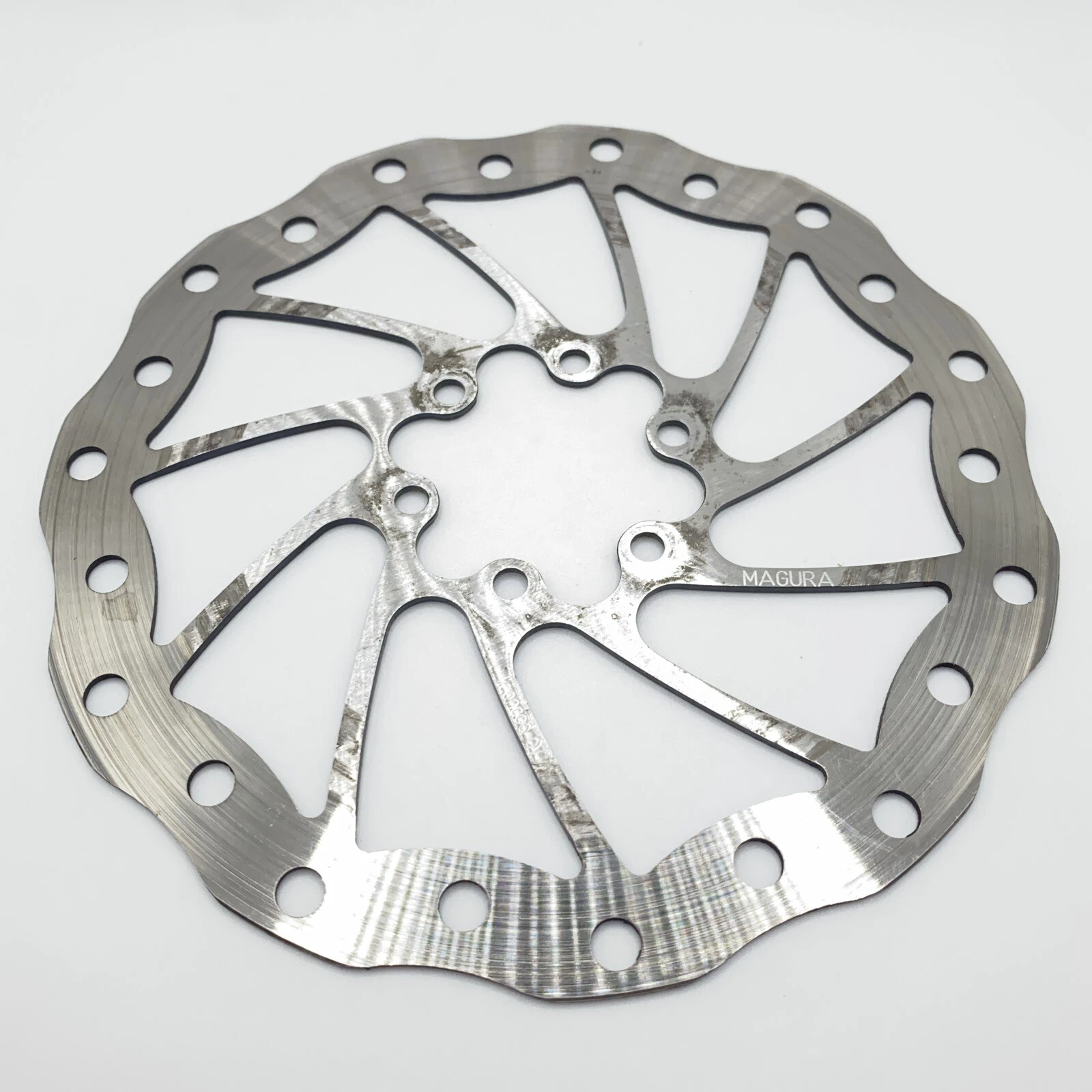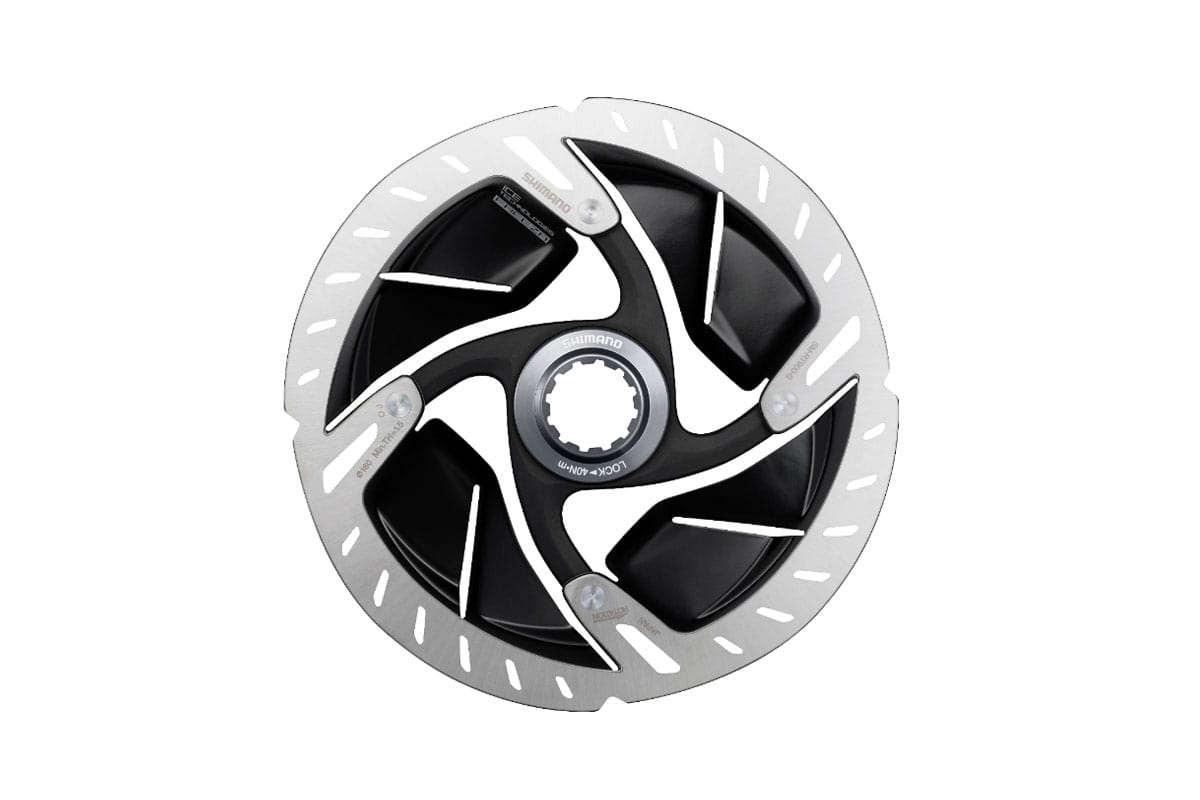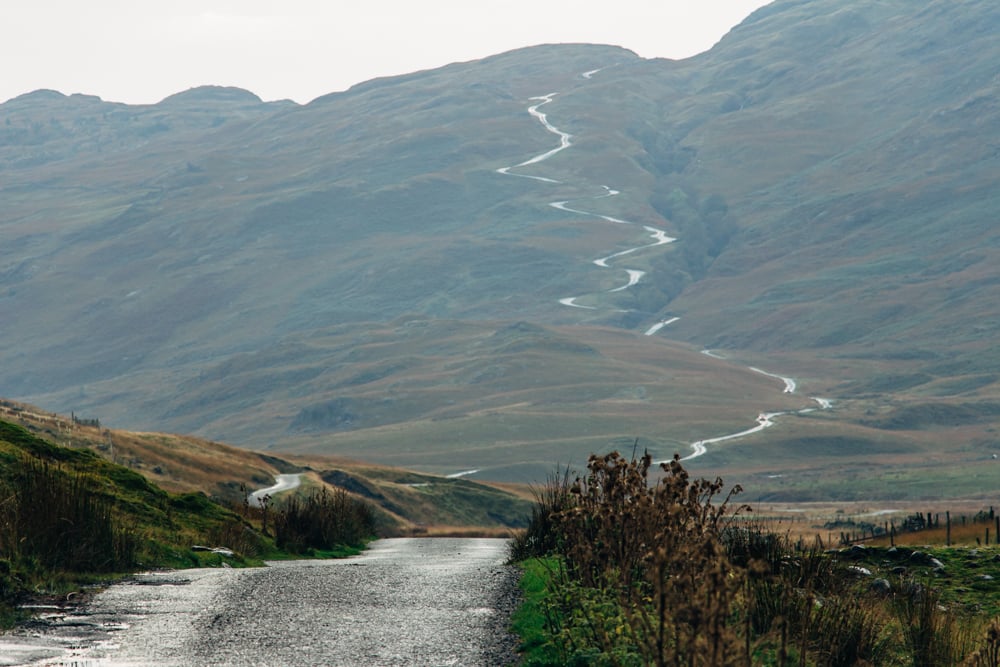For a road bike, which just makes it worse as there's not energy being lost to the trail, or braking for features, it's just going to be dragged all the way to the bottom 😬 even with the best attempt to manage the heat by alternating the braking front - back and trying to let the bike pick up some speed on the straighter sections it's still going to be hard work.
With a 90+ kg rider
Descending 1000ft
Upto 1in3
Repeatedly, ~10x per day for 6 days.
Aesthetics, weight saving, brand coordinating all not important 😂
My fist thought would have been the shimano freeza rotors, but they don't make them in 6-bolt, and were were those who managed to melt the aluminium core's even offroad.
Failing that I'm thinking that surface area probably trumps everything (because it means more mass and more area to dissipate heat from) and the least drilled ones I can find are the old style Magura / Galfer rotors
And Sram's Paceline
but they don't make them in 6-bolt
They do. I'm using some. RT-MT905
EDIT: Sorry, looks like no 160mm size... why, oh why, oh why, oh why... 🤯
Chonky AliExpress jobs. 2.3mm thick, though so may be too chonky.
I use the 203mm ones on my KSL and I haven't died
Shimano RT86 IceTec 6-bolt 160mm is available.
Shimano RT86 IceTec 6-bolt 160mm is available.
Yea, I've got those on some of my MTB's but they don't have the extra cooling fins. Which probably fine for quickly dissipating a bit of heat after a corner offroad, and I've never had the issues some people did with the cores melting. But I'm not convinced they'd be any better on the road than a solid disk with more area?
Shimano seem to have the same idea because the Ultegra / DA versions look like this, with smaller holes in the disks and massive aluminum heatsinks. But they don't make them in 6-bolt 😡
The 2mm thick SRAM HS2 or Magura Storm HC rotors may help - if they fit in your calipers.
The fins on the upper end rotors (above RT86) will help, but the IceTec Alu sandwiched in steel heat sink approach will still be beneficial - they've just gone further with the fins. Unfortunate that the Freeza options aren't available in 160 6-bolt, but I guess it's because Gravel and road (where 160 and some 140 are used) have pretty much settled on Centrelock, and MTB is mostly 6-bolt with folk looking for 180 and bigger? Dunno.
Apart from readily available Shimano XT, Aztec do a floating 160mm, six bolt that I have used and are excellent quality and resistant to warping. Available from the importers, Madison, via www.freewheel.co.uk
I'd suggest the magura MDR, there is just more metal to dissipate the heat
https://www.merlincycles.com/magura-mdr-c-disc-rotor-173133.html
I'd look for thicker rotors if you can't get aluminium cored ones. That plus sintered pads should work fine
Those old pattern maguras look fine. Just avoid the lightweight ones as they have more cutaways. More (metal) is more here. I have tried super-spindly cutaways rotors before and even when I was lighter, they could still get cooked easily. Beefy rotors just stay consistent and work fine.
Hang on, surely thicker discs are better because they can absorb more heat but worse because they then take longer to cool down.
If you're dragging the brakes all the way down and you exceed the thicker discs ability to absorb heat, you'll havspenhave to spend longer with hot brakes than if you'd gone for thinner discs?
Surely the answer is dont drag the brakes all the way down?
Experience from tandems is doing so overwhelms the heat capacity of big discs quickly.
Cable discs are less sensitive to hear
Surely the answer is dont drag the brakes all the way down?
That's a hard nope when it looks like this😂 There's not enough road between the turns to let the bike pick up speed.
<
<
Experience from tandems is doing so overwhelms the heat capacity of big discs quickly.
The only tandem couple I know locally use a 200 or 220mm rear disk (which looks comical with the tiny Sram Red caliper) to mitigate the problem. I don't think that would fit in the frame though.
Presumably your intention is to keep the overall disc temperature down low enough to prevent the pads from going past their fade point?
In which case the aim should be to get discs with as much mass as possible. In a single braking event, disc heat cannot possibly be dissipated to the air as quickly as it is put into the disc from friction. You therefore need somewhere to store it. The greater the mass of the disc, for the same amount of energy added to it, the lower its temperature will be overall.
Before the next braking event you then need to dissipate as much heat as possible. The way to do this is with surface area. Putting holes in discs can increase the surface area of a disc, but it can also reduce it, depending on their size. They also reduce the mass, which is a negative again. So it's probably best to minimise them if possible. I don't think I've ever seen plain discs on a bicycle. Holes do help clear water and debris though.
Is there any possibility of going for a larger diameter (=more mass) with adaptors?
I think Icetech discs and pads. The system is designed to help with the exact thing you're referring to.
RT86 160s are £20 from Merlin.
I swapped from Centreline discs and standard shimano sintered pads to Icetech with the posh Shimano pads with the aluminium back plates and noticed a difference.
I could feel the brakes get hot and lose power with the SRAM discs. The same thing still happened with the Icetech stuff (although not as easily) but crucially, they recovered a whole lot quicker. Come off the brake and then put it back on and it would feel sharp again. Non Icetech stuff still felt dull until it had a while to cool down.
I think the descents you're looking at are going to overwhelm even the thickest of 160mm discs so better cooling trumps higher mass. Is there no scope to go 180? I know nothing of road going bicycles.
Presumably your intention is to keep the overall disc temperature down low enough to prevent the pads from going past their fade point?
More worried about boiling them 😂 although it's a catch 22 between fade free sintered pads and insulating organic ones.
Good point on small enough holes actually increasing surface area, Galfer make some bold claims about their shark rotors
First Rides: Galfer Shark lightweight 160mm XC rotor can save grams without losing power - Bikerumor
But they're silly money.
I did some rough and ready calculations on the heat transfer and:
@400C each rotor will radiate about 150W, which is about ~0.3m/s, or somewhere between walking pace and a slow jog down a steep road.
Stopping from 30mph only raises the temperature by ~80C
It would take about 80m of vertical descending to reach 400C.
i.e. the problem is almost certainly a question of how much heat can be transferred out of the disk in a steady state. Individual braking events contribute very little.
I suspect the solution is stop overthinking it and bling it out with some Hope rotors.
Ever thought of Ashima?
See the heat test on YT but they might swallow your pads…
I've used Sram Centreline XR (floating aluminium centres... as per 2nd post). No problems on Mallorcan descents. Make sure your brakes are well-bled with fresh fluid too.
Swissstop look to have studied heat flow and rotor design to come up with the optimum cooling.
Worth a quick read of their claims anyway as although I'm using them I probably don't go anywhere near their limits to verify how well it's all working.
Catalyst Disc Rotor | SwissStop
https://www.swissstop.ch/catalyst/#fndtn-Development
Can you not go to 180 with an adaptor? If it's only for a limited time, it's not going to do any damage to the fork and you're (at least) 30 kilos below the weight limit for most forks.
Ever thought of Ashima?
Tried them and various other 'lightweight' rotors in the 2010's. They were all rubbish. Gram for gram a normal 160mm rotor had at least the same power as the similar weight 180mm Ashima/A2Z/Alligator/KCNC rotors (same with 180 Vs 200).
It's why I'd quite like to see some test data for a 'solid' rotor, or at least one with minimal slots to let gas escape. I'm (almost) entirely convinced that more metal in the brake track is better. Although I might have a dig for that Swisstop funded research paper as I did a similar study on the impact of airflow on the cooling of exhausts at uni and concluded that there was actually relatively little contribution from convection.
DOT is dead: SRAM goes all in on mineral oil with new Motive brakes | BikeRadar
Just read here that even SRAM admit that the cheaper HS2 has 7% more power / better cooling than their the Centerline....








